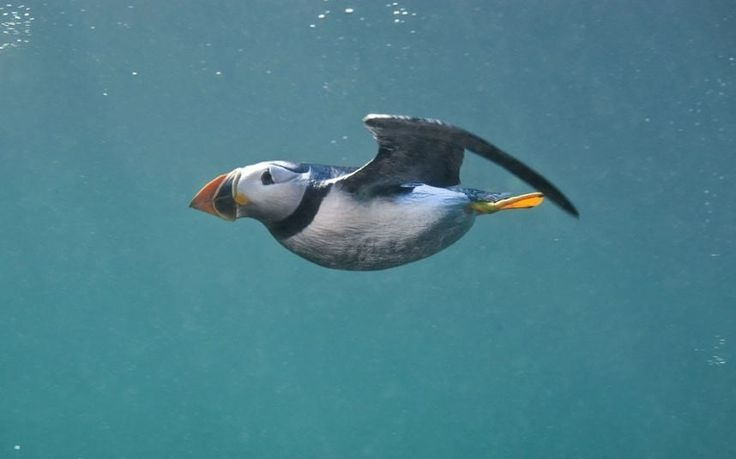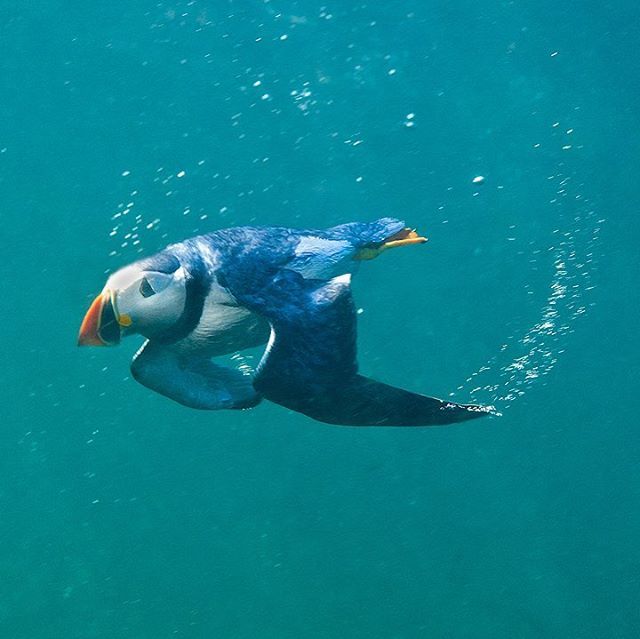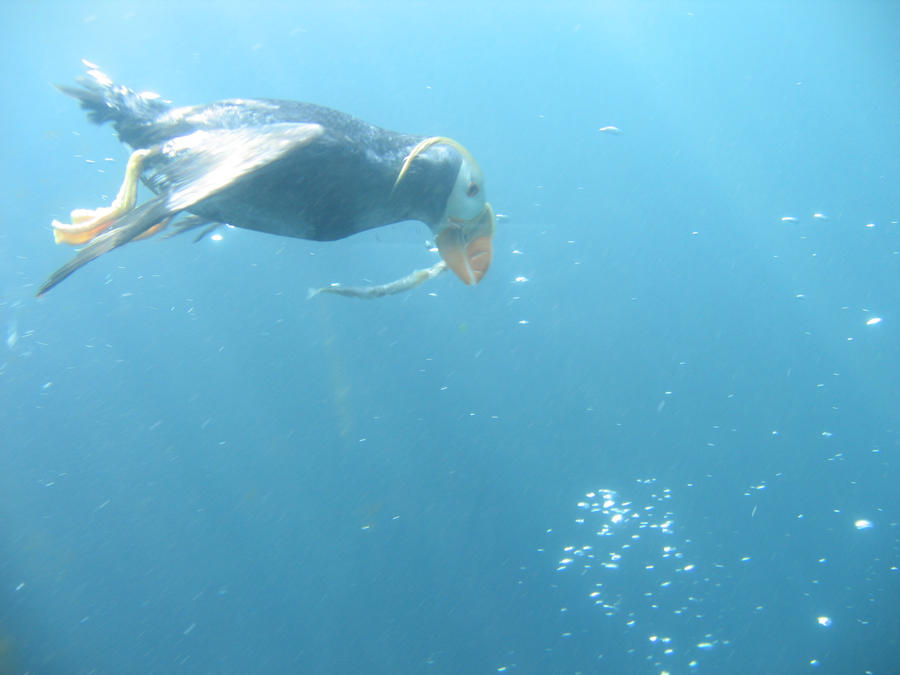
Puffins are social birds and often live in large colonies. They are monogamous birds and mate for life, a charming trait that adds to their appeal. Puffins lay a single egg each year, and after about 40 days of careful incubation, the world welcomes their fluffy and endearing chicks. After another 40 days, these little ones, often called pufflings, fledge into the wild, ready to embrace their aquatic lifestyle. Puffins can live for up to 20 years, which means they have plenty of time to enjoy their remarkable underwater adventures.

Puffins are adorable seabirds, celebrated for their vibrant beaks and fluffy plumage, but their unique talents extend beyond their charming appearance. Beneath their charming facade lies a remarkable ability to become skilled underwater flyers. These birds use their wings to maneuver beneath the waves, utilizing their feet to control direction, just as they would in the air.
When it comes to searching for food, puffins are incredibly versatile. They can dive up to 200 feet underwater, which is deeper than many human divers dare to venture. Their preferred diet consists of small fish, including sand eels and herring, which they capture with finesse. Their agility as swimmers enables them to change direction rapidly, enhancing their hunting efficiency. Furthermore, puffins possess a unique gland that allows them to desalinate seawater, a crucial adaptation that helps them stay hydrated during extended diving sessions.

The secret behind the puffins’ underwater prowess lies in their wing movements. Much like their aerial counterparts, they employ their wings to propel themselves through the water. The rapid wing flapping creates a powerful jet of water that propels them forward. Their webbed feet serve a dual purpose by helping them steer and brake, granting them exceptional control over their movements.

Puffins’ swimming skills are not just for show; they are highly efficient swimmers. Speeding through the water at up to 25 miles per hour, they become formidable predators, adept at capturing their prey. What’s more, they have evolved an innate ability to evade potential threats, including sharks and dolphins, which are often found in the same waters.
The exceptional ability to “fly” underwater is a unique adaptation that has enabled puffins to thrive in their maritime environment. Beyond their individual charm, puffins serve a vital role in the marine ecosystem, playing a part in regulating the population of small fish, which helps maintain the delicate balance of this underwater world.
If you ever find yourself fortunate enough to spot a puffin in the wild, take a moment to appreciate the intricate blend of nature’s engineering that enables these creatures to be both charming and extraordinary underwater flyers. Puffins are a testament to the wonders of the natural world, showcasing the incredible diversity of life on our planet.

Leave a Reply